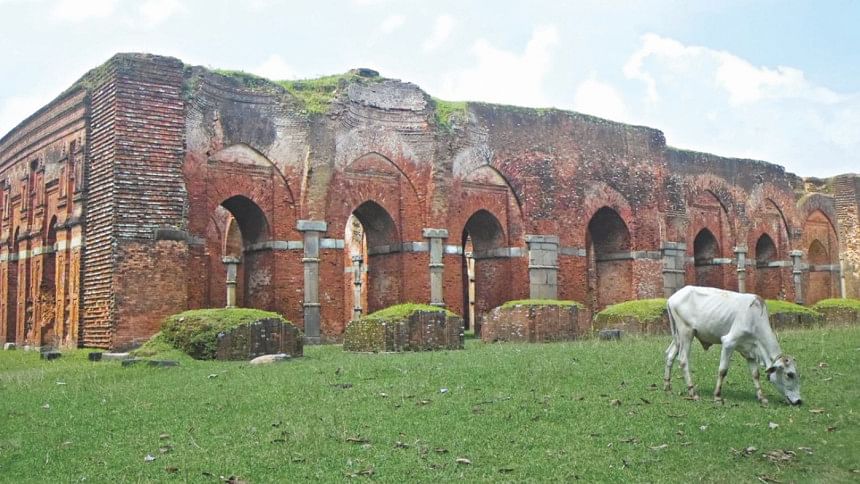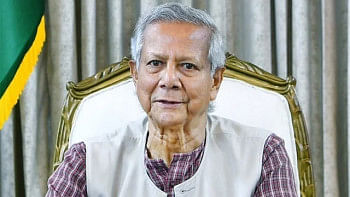History beyond reach

One of the most significant archaeological hotspots in all of Bengal, the sites of Gaur which straddle the Indian border in Chapainawabganj should be bustling with tourists.
But on the Bangladeshi side the several impressive ruins scattered across five square kilometres situated around 25 kilometres from the district town in Shibganj upazila, are most often quiet. Tourist enjoyment is hindered by a lack of road access.
Likely founded during the Pala era, Gaur rose to prominence after the Sena dynasty came to power in 1100 CE. It grew to be a prosperous and vibrant city, then-situated on the Ganges River, though the river has long since changed its course. In 1198 Gaur was captured by Muslim rulers but did not decline. Rather, Gaur served as the primary seat of power in Bengal for the next three centuries.
The structures that remain were mostly built from the end of the 15th century. They include the Khoniadighi, Dhaniachak, Chamchika and Daroshbari mosques, as well as the Chhoto Sona Masjid, the Daroshbari madrasa and the Tahkhana palace complex.
Sadly, most of these sites are hard to reach.
The 99-foot high and 34-foot wide Daroshbari mosque is located in Omarpur village. It was once famed for its terracotta designs but is now in a poor state. Deep cracks have developed in its walls, weeds cover most of the exterior and many decorative tiles have either eroded or been stolen. Along with Dhaniachak, Daroshbari mosque is only accessible via a rough, dirt road. More often than it hosts tourists the historic site serves as a resting place for cattle.
Chamchika near Baliadighi village is yet less accessible. To reach that mosque tourists have to traverse a track through mango orchards on foot. "There are artistic terracotta designs at Chamchika," notes one elderly local, Karom Ali. "But few tourists go there.
There isn't any road."
Passage to the Khoniadighi mosque and Daroshbari madrasa sites is, meanwhile, all but impossible. Former access routes have been occupied and effectively closed off by influential locals.

Two of the few tourists to attempt visiting the sites recently spoke of their experience with The Daily Star. "There aren't any decent places to stay or to eat nearby," says Abdus Salam, a teacher from a Pabna madrasa.
"Only the Chhoto Sona Masjid is beside the highway," says the other tourist, Rezaul Islam, a businessman from Kashiadanga in Rajshahi. "It's difficult or impossible to visit the other sites."
"We have made the upazila nirbahi officer in Shibganj aware of the problem," says Humayan Kabir, the deputy assistant engineer for the archaeology department with responsibility for the sites, "We have also spoken with the Local Government and Engineering Department in the hope of constructing the much-needed roads. I hope that construction can begin this financial year."
For some of the sites like Daroshbari madrasa, however, land acquisition will be required to accommodate the roads.
Locals and experts alike recognise the tourism potential of this important archaeological zone. But until key access roads are in place most of the sites are certain to remain eerily deserted and rarely explored.

 For all latest news, follow The Daily Star's Google News channel.
For all latest news, follow The Daily Star's Google News channel. 



Comments